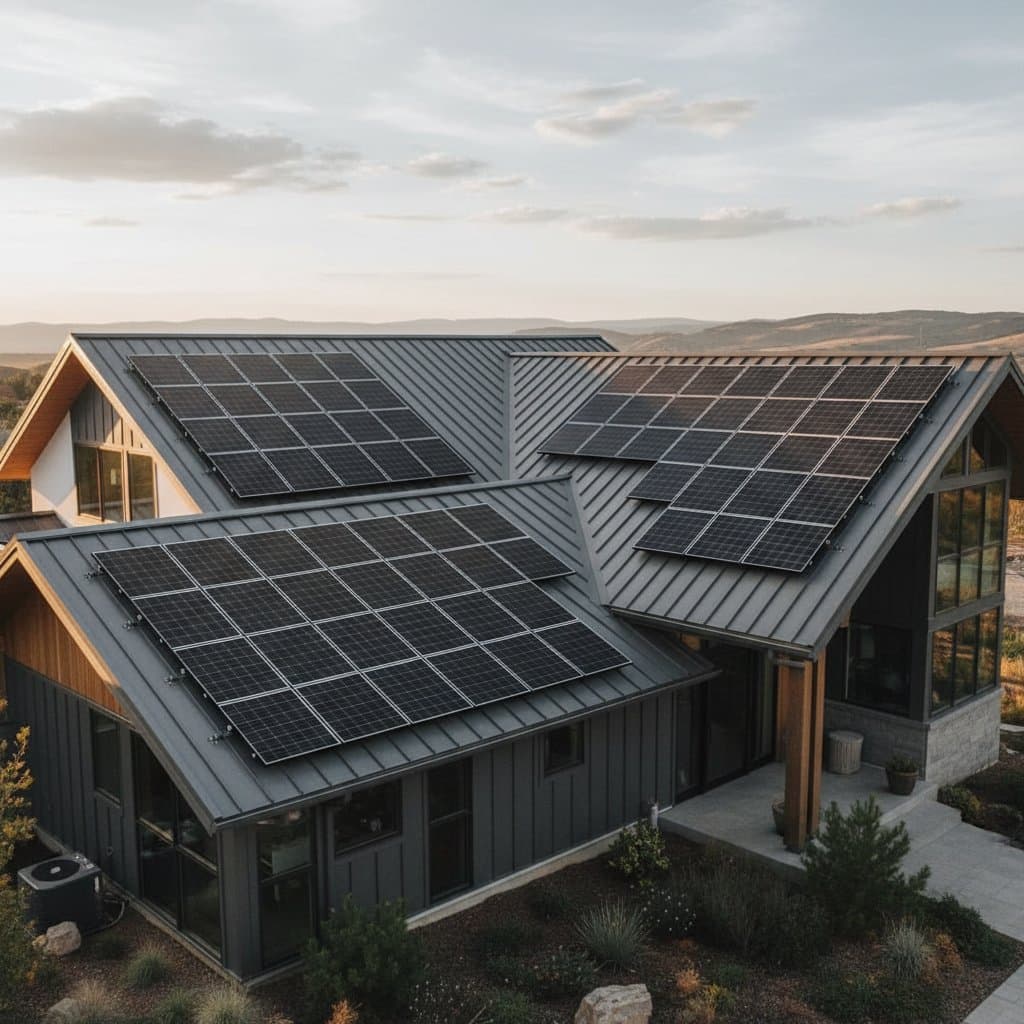Why Metal Roofs Lead Solar Installations
Metal roofing emerges as the optimal substrate for solar power systems in residential and commercial applications. Installers value metal roofs for their extended durability, uniform structure, and streamlined installation processes that surpass alternatives. With solar adoption accelerating, integrating photovoltaic arrays on robust roofing becomes essential for operational success.
Aligning Lifespans for Seamless Durability
Metal roofs endure 50 years or longer with routine care, paralleling the 25- to 40-year service life of premium solar modules. Asphalt shingles typically last 20 to 30 years, necessitating replacement during a solar system's prime years and incurring removal expenses. Metal eliminates such interruptions, streamlining upkeep and preserving energy output.
This resilience bolsters solar array stability. Panels secure to a foundation resistant to deformation, fractures, or decay, minimizing hazards for crews and owners alike. Such predictability enhances project budgeting and execution.
Streamlined Mounting for Efficient Setup
Attaching solar panels to metal roofs proceeds more rapidly and securely than on asphalt or tile. Standing seam configurations enable clamp attachments without piercing the surface, accelerating workflows while upholding waterproof integrity. Limited entry points curb leak risks and simplify warranty management.
Ribbed or corrugated profiles accommodate tailored brackets that fasten modules firmly without structural alterations. Mounting solutions proliferate, offering versatility for diverse array layouts and roof geometries. These tools optimize crew productivity by reducing on-site tools and time.
Minimal Upkeep for Sustained Performance
Metal roofs demand sparse maintenance, complementing solar systems' hands-off operation. Both elements prioritize endurance, forming a unified barrier for reliable power production. Advanced coatings shield against rust, humidity, and sun damage, prolonging visual appeal and utility.
Installers benefit from reduced service demands, reallocating efforts to expansions. Owners gain a low-intervention setup: initial placement yields steady, silent operation with occasional checks. This setup bolsters financial returns through dependable yields.
Boosting Efficiency via Reflection and Airflow
Prior to solar addition, metal roofs lower heat gain through high reflectivity, easing cooling burdens in summer. Solar panels amplify this by shading the surface, curbing thermal buildup. Together, they diminish HVAC reliance and elevate net energy savings.
Certain designs feature integrated vents fostering under-panel circulation. This moderates panel temperatures, enhancing conversion rates and output reliability. Installers leverage these attributes for superior long-term system efficacy.
Lightweight Design Eases Integration
Compared to slate or concrete, metal weighs far less, alleviating load stresses and obviating reinforcements. Installers avoid extensive engineering reviews, particularly on legacy structures. Lighter panels simplify transport and maneuvering, trimming labor and logistics costs.
Retrofit scenarios thrive on this trait. Existing frameworks often bear solar additions atop metal without rafter overhauls, expediting approvals and minimizing expenses.
Leveraging Advanced Racking Solutions
Racking innovations tailor to metal substrates, from seam-gripping clamps to modular, rail-less frames. These reduce components and attachment steps, yielding tidy setups with intact roofing. Efficiency gains accelerate timelines and curb waste.
Such compatibility ensures repeatable results, safeguarding margins in a crowded field. Installers standardize practices, boosting throughput and client trust.
Advancing Sustainability and Economics
Metal roofs advance eco-objectives with recyclability and prolonged utility, synergizing with solar's clean output. This duo underscores green credentials, appealing to eco-conscious stakeholders. Proposals often spotlight diminished landfill impact and lifecycle extension.
Economically, synergies yield savings: slashed repairs, deferred replacements, and optimized ownership costs. Educating clients on these merits encourages premium selections from installation onset.
Market Shifts Toward Integrated Solutions
Demand surges for solar-compatible roofing in commercial, farm, and home settings. Metal's versatility spans warehouses to residences, enabling uniform installer protocols across portfolios. This uniformity streamlines sourcing and skill development.
Regulations and incentives spur bundled upgrades, aligning roof renewals with solar deployments to harness rebates efficiently. Specialists in metal-solar pairings seize this expansion.
Implementing Durable Solar Strategies
To thrive, installers cultivate proficiency in non-penetrative clamps, lightweight racks, and weatherproof hardware. These enable robust, enduring deployments that withstand elements. The approach prioritizes foresight over reaction.
Property managers benefit from proactive choices: metal foundations paired with solar fortify against obsolescence, advance environmental aims, and deliver decades of harmonious operation. In an era of reliable renewables, this integration unlocks maximal value.
